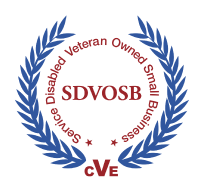Dallas
Dallas Digital Forensics | LCG Global
Address:
306 Morton St. Richmond, TX 77469Latest Blog in The eDiscovery Zone
After Utah — Part 4: Venue Hardening and Event Operations Without Killing the Event
Series context. This five-part series translates lessons from the Utah Valley University incident into practical guidance for campuses, event organizers, and public officials. Part 4 focuses on venue design and event operations that deter, deny, and speed response without ruining the attendee experience. [1]
The Design Problem in Plain Terms
Outdoor venues create long exposed sightlines, elevated vantage risk, and crowd egress friction. Your goal is not to militarize the space. Your goal is to reduce attacker advantages, shorten decision time, and keep routes clear for medical and investigative teams. Proven playbooks from major-event guidance, building risk manuals, and crowd safety standards give you a disciplined starting point. [2][3][4][5][8]
LCG perspective. Security that is invisible to attendees is visible to attackers. Build deterrence into backdrops and staging, control rooftops and windows, and rehearse the first hour so the cordon and evidence handoff happen fast. [2][3][4]
After Utah, Part 3: Airspace Risk and What Event Organizers Can Legally Do
This five-part series translates lessons from the September 10 Utah Valley University assassination into practical guidance for campuses, event organizers, and public officials, focusing on threat assessment, drone risk, venue design, digital forensics, and crisis communications. [1]
The Sky is a Perimeter Now.
The Utah attack revealed how open-air events are vulnerable from rooftops and from above. Drones are inexpensive, widely available, and increasingly unconstrained by manufacturer geofencing, which elevates the need for site-specific awareness and monitoring. [1][6] Event teams must also understand the legal boundary. Only select federal agencies, including the Department of Homeland Security and the Department of Justice, hold statutory authority to neutralize or mitigate unmanned aircraft systems under the Preventing Emerging Threats Act of 2018. [2][3] For everyone else, the mission shifts to detection, documentation, and coordination. Remote ID, mandated under 14 CFR Part 89, provides a digital trail that is valuable for both safety decisions and evidentiary use, if you plan ahead to capture and preserve it. [4][5][7]
Beyond the Screen: The Next Frontier of Digital Forensics – Part 3
Series context. Earlier installments explored forensic lessons from augmented reality and biometric identifiers. This part shifts focus to financial technology, where mobile payments and digital wallets present new opportunities for fraud detection, and also pose new evidentiary challenges for courts and investigators. [1]
The New Currency of Evidence
Smartphones serve as both communication devices and payment terminals. Apple Pay, Google Wallet, and other contactless systems are convenient for both end users and merchants, and they also create digital trails that can verify or challenge disputed transactions. Investigations have shifted away from paper receipts and card statements (which may still be relevant) to ephemeral metadata streams, including tokenized card numbers, device IDs, NFC exchange logs, and app-level transaction histories. Courts increasingly expect the proper collection of this evidence. When properly collected, these data points will help establish the identity, timing, and intent of financial transactions that may be in dispute. [2][3]






